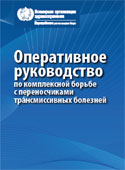Operational framework on integrated vector management

Download
2012 Vector control is well suited for integrated approaches, because some vectors are responsible for multiple diseases, and some interventions are effective against several vectors. Integrated Vector Management (IVM) is a rational decision-making process for the optimal use of resources for vector control. It is based on evidence and integrated management, promoting the use of a range of interventions – alone or in combination – selected on the basis of local knowledge about the vectors, diseases and disease determinants.
The IVM approach addresses several diseases concurrently, because some vectors can transmit several diseases and some interventions are effective against several vectors. IVM will reduce the pressure imposed by insecticides to select for insecticide resistance. WHO recommends IVM as the preferred approach to prevent and control Vector Borne Diseases (VBDs).
The five elements of an IVM strategy identified in the Global Strategic Framework for IVM include:
- advocacy, social mobilization and legislation;
- collaboration within the health sector and with other sectors;
- an integrated approach;
- evidence-based decision-making, and
- capacity-building.
The aim of IVM is, thus, to solve problems in vector control by improving efficacy, cost-effectiveness, ecological soundness and sustainability with sound policies, monitoring and evaluation. This is achieved by evidence-based decision-making, addressing several diseases at the same time, combining vector control with judicious use of insecticides and involving other sectors and communities.



